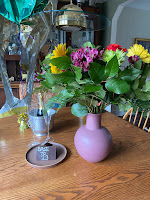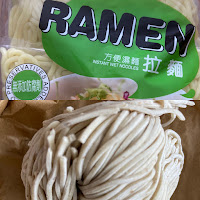Other names for the April full moon: Pink Moon, Growing Moon, Seed Moon.
Eggs are potent symbols of new beginnings, birth, fertility, and resurrection.
Easter eggs have become part of the Christian celebration, but their symbolism dates back at least to Egyptian times.
According to food historian Sam Bilton:
Throughout history, people across the world have given each other eggs at spring festivals to mark the seasons. Early Christians in Mesopotamia dyed eggs in the period after Easter. The practice was adopted by the Orthodox Churches, and from there it spread into Western Europe. Eggs represent new life and rebirth, and it’s thought that this ancient custom was absorbed into Easter celebrations.
During Lent, when Christians fasted to mark Jesus’ time in the wilderness, eggs were one of the foods that people weren’t allowed to eat (incidentally, this is why we make pancakes on Shrove Tuesday). So when Easter Sunday came around, tucking into an egg was a real treat.
Various traditions and superstitions sprang up around the egg at Easter. Eggs laid on Good Friday were said to turn into diamonds if they were kept for 100 years. Some thought that eggs cooked on Good Friday and eaten on Easter would promote fertility and prevent sudden death, and it became the custom to have your eggs blessed before you ate them. It was also said that if your egg had two yolks, you’d soon become rich. In Devon and Cornwall, people used to play a game like conkers with their eggs, hitting them against each other until one of them cracked.
According to Scientific American:
- The Phoenix was adopted as a Christian symbol in the first century AD. It appears on funeral stones in early Christian art, churches, religious paintings, and stonework. The egg from which it rose has become our Easter egg. As with many symbols, the Easter egg has continued to shift. When the Lenten fast was adopted in the third and fourth centuries, observant Christians abstained from dairy products, including milk, cheese, butter, and eggs. In England, on the Saturday before Lent, it was common practice for children to go from door to door to beg for eggs—a last treat before the fast began.
- Ancient Egyptians believed in a primeval egg from which the sun god hatched. Alternatively, the sun was sometimes discussed as an egg itself, laid daily by the celestial goose, Seb, the god of the earth. The Phoenix is said to have emerged from this egg. The egg is also discussed in terms of a world egg, molded by Khnum from a lump of clay on his potter's wheel.In the Zoroastrian religion, the creation myth tells of an ongoing struggle between the principles of good and evil. During a lengthy truce of several thousand years, Evil hurls himself into an abyss and Good lays an egg, which represents the universe with the earth suspended from the vault of the sky at the midway point between where good and evil reside. Evil pierces the egg and returns to earth, and the two forces continue their battle.In Findland, Luonnotar, the Daughter of Nature floats on the waters of the sea, minding her own business when an eagle arrives, builds a nest on her knee, and lays several eggs. After a few days, the eggs begin to burn and Luonnotar jerks her knee away, causing the eggs to fall and break. The pieces form the world as we know it: the upper halves form the skies, the lower the earth, the yolks become the sun, and the whites become the moon.
- In China, there are several legends that hold a cosmic egg at their center, including the idea that the first being or certain people were born of eggs. For example, the Palangs trace their ancestry to a Naga princess who laid three eggs, and the Chin will not kill the king crow because it laid the original Chin egg from which they emerged.
- Hinduism makes a connection between the content of the egg and the structure of the universe: for example, the shell represents the heavens, the white the air, and the yolk the earth. The Chandogya Upanishads describes the act of creation in terms of the breaking of an egg.




















